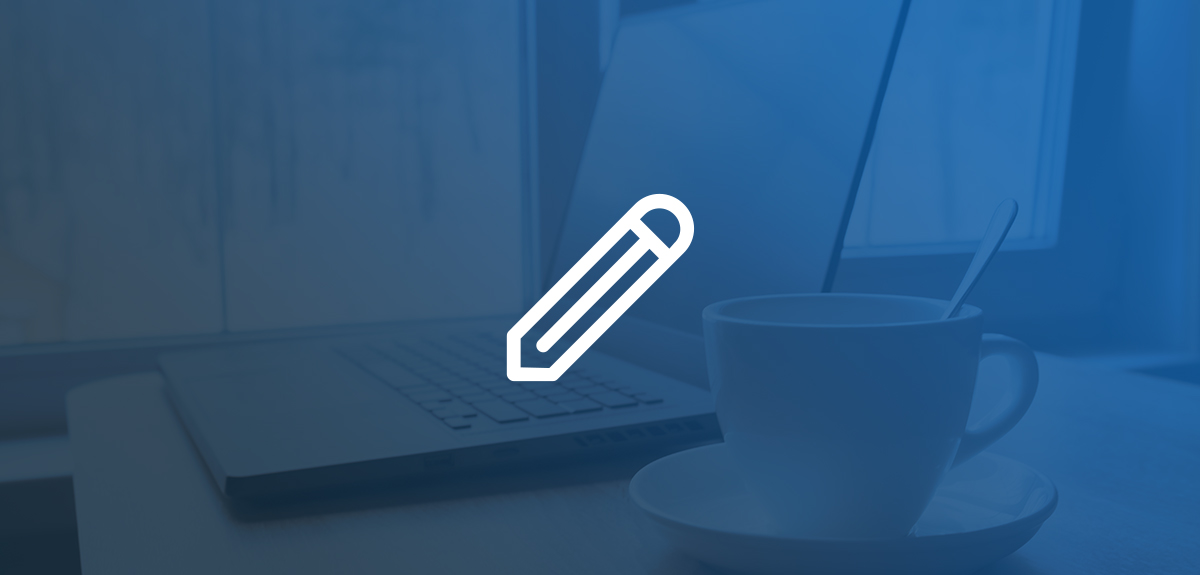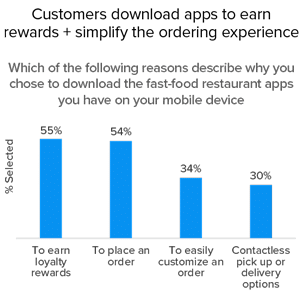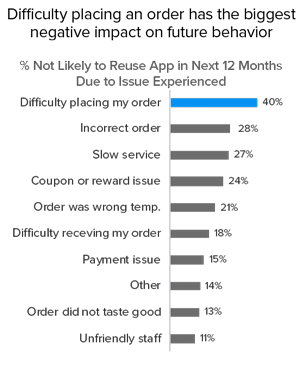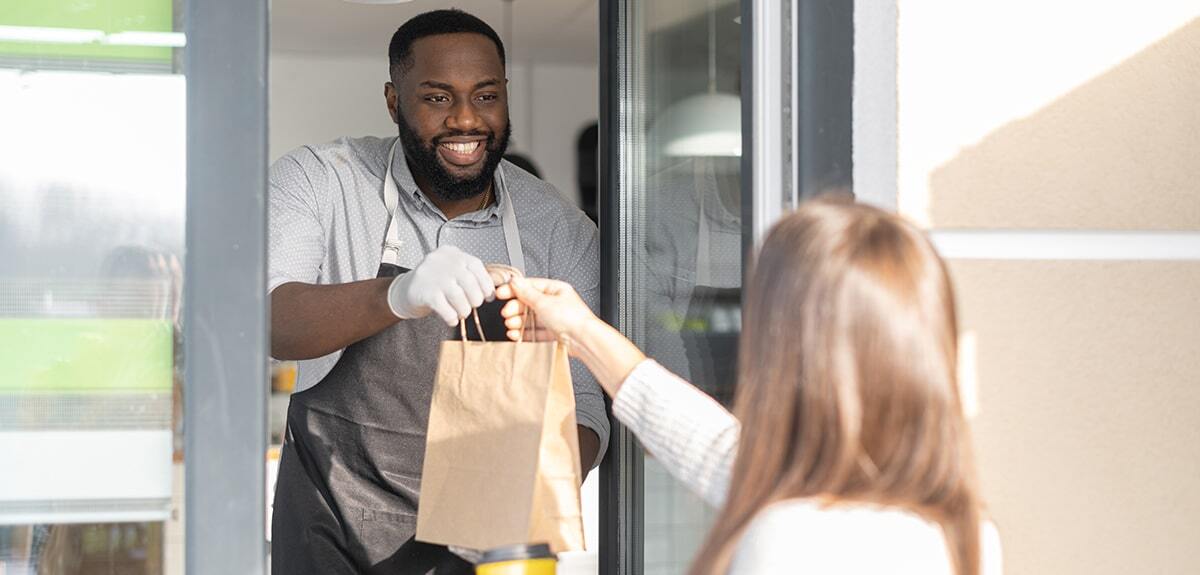Customer Engagement Through Digital Channels for QSR Brands
Published on Jan 28, 2022

The bad news is you are constantly at risk of being lost.
Especially in QSR, looking for best practices in the never-ending quest to serve more customers and drive up efficacy would seem futile without a guiding beacon. The good news is your beacon is always with you, and the more you use it, the clearer your path will be. This essential time-saving resource? The voice of your customers.
The voice of the customer is one of the single best tools brands can employ to improve on a business-wide basis. With the breadth of digital interaction channels available to companies today, customer engagement through digital channels—actively engaging with current and potential customers through technology to build a relationship and seek feedback—is the among the best ways to do it.
This is true regardless of where you meet your customers, as the borders between physical and digital customer journeys no longer exist. For instance, someone might start looking at a menu on a website and end up stopping by to finally decide what they'd like in person. They may see a promotion on social media, download a brand’s app to check the menu and place an order, and then come to the drive-thru window to pick it up. With all these paths crossing so many platforms, it's essential to have a strategy for customer engagement through digital channels that is ready to engage with, and get feedback from, your customers across their entire journey. By working with customers and listening to them through engagement on digital channels, you can discover insights that will help improve processes and lead to better business outcomes.
Different channels of digital feedback
An effective digital customer engagement strategy consists of both active channels, those where you ask potential and current customers for their feedback, and passive channels, those where you let visitors decide when and where they'll provide feedback on their own.
Modern active digital feedback channels maximize impact by employing smaller engagements triggered by certain customer behaviors at crucial points in the customer journey. This engagement is customized for specific events like completing an order, engaging with a site or app without making a purchase, or adding a product to a shopping cart and abandoning it—and it can take the form of tools like short interrupt surveys, chatbots, and follow-up messages. This targeted feedback from an engaged customer base is essential and lets you surface targeted insights to help design a user experience optimized for conversion at each step in the purchase decision journey.
While active feedback is triggered by customer behaviors, passive digital feedback is consumer-initiated and usually open-ended. These are facilitated by listening posts made available during the customer journey, ideally allowing them to leave feedback specific to a page, app, or event based on their experiences. Whether it's positive or negative, this passive feedback is invaluable as it goes the extra mile to reveal and answer the questions you hadn't thought to ask.
Digital engagement and the acceleration of native apps
One of the most tangible examples of the quickening pace of digital transformation and customer engagement through digital channels can be found in the QSR segment. The pandemic drove unique needs in the industry, and at its height, engagement through mobile devices increased 40% as safer-at-home policies went into effect and consumers turned to digital platforms. To assess the impact on the customer experience and brand loyalty, we asked nearly 16,000 consumers about their experiences with QSR apps. Here’s what we learned:
QSR app downloads have exploded in recent years
A 2017 study conducted by SMG revealed just 38% of respondents had a restaurant app installed on their phones. In our more recent study, that percentage has more than doubled to 83%—with nearly 1 in 3 customers having 5 or more fast food apps installed and 2 in 3 have ordered through an app at least once in the past 30 days. The top reasons cited for downloading a restaurant app show customers are most often seeking out the valuable content of loyalty rewards offered through app orders, as well as the simplified ordering/customization process and ability to have a contactless experience.

While features and promotions may inspire downloads, brands that offer a differentiated experience can turn their apps into true revenue-generators by driving usage rates and increased visit frequency. We turned to the data from our dynamic market intelligence tool in our smg360® platform to see how respondents’ app preferences lined up with actual visit behaviors.
The analysis revealed customers who have a favorite restaurant app visit that brand 2 more times per month on average compared to customers who don’t identify it as their favorite restaurant app. Brands that deliver a differentiated app experience don't just drive satisfaction and build customer loyalty—they create personal connections that inspire customers to visit and spend more often.
To drive usage + retention, brands must deliver a seamless experience
While our situations have changed over the past few years, the ultimate goal to deliver on the promise of exceptional customer experience has not. Many brands have been able to step up in this era of digital interaction, with 91% of respondents saying that ordering through the app was about the same as—or better than—ordering in person. However, one poor digital experience can have a snowball effect that leads to infrequent usage and the app ultimately being deleted. In fact, 2 in 5 respondents reported having deleted at least one restaurant app from their phones in the past 3 months.
This means it’s even more important than ever to understand the "why" behind the consumer behavior. In our study, 40% of customers said they will likely not use the app again in the next 12 months due to difficulty placing an in-app order. With customers citing simplified ordering processes as a key reason for downloading the app, it’s table stakes to get this core self-service functionality right each and every time. Any touchpoint that introduces friction in the purchase process will, at best, discourage future usage and, at worst, put customer loyalty at risk.

Brands that offer feature-rich mobile apps + innovate fulfillment processes have much to gain
As app adoption and usage rates have increased, some brands have found innovative ways to incorporate customer engagement through digital channels into their overall brand experience. From having dedicated drive-thru lanes for online orders to designating entire locations as pickup-only, much of the focus has been on streamlining the order fulfillment process.
However, one of the more effective methods to build better customer relationships through digital tools is often overlooked—the ability to offer a more personalized experience to meet customers' needs in a meaningful way. Whether it’s using transaction history to offer incentives on favorite items, gathering direct and personalized feedback, or simply enabling users to save their order customizations for future use, apps allow brands to collect customer-level data that can be used in ways that make it easier to engage with them during future interactions.
Improving engagement by diversifying communication streams
The time to rely on single-channel customer interactions, like receipt-based invitations, for customer data from your target audience has passed. In today's world, a multi-channel approach encouraging customer engagement through digital channels, using everything from texts and push notifications to email, is necessary to drive better results. For example, in a recent analysis, we found that email invitations resulted in a 20% increase in valid responses over receipts, along with 10% more feedback from typically unengaged customers. In addition, in-app invitations also resulted in a 55% response rate, further diversifying the customer base providing feedback.
With more ways to communicate with customers than ever before, take advantage of technology to encourage more frequent, smaller-scale interactions in your customer engagement process.
But you also need to be ready for the hard part of the age of the consumer.
More feedback, more problems
It's important to recognize that, in many cases, as engagement diversifies and increases, overall customer satisfaction will initially go down. While email invitations drove up participation in the study just mentioned, Overall Satisfaction scores dropped 17ppts. This should be expected as you expand your feedback pool beyond just your loyal customers telling you good news. Be sure to communicate to your teams and support staff early + often that the shift is expected and will ultimately help inform more effective improvements to your business strategy moving forward to meet customer expectations.
Unify engagement channels to find the gaps
With all this data, interaction, and feedback coming from various digital channels, it's crucial to have a way to integrate, manage, compare, and analyze it all for insights. Developing actionable insights is the "secret sauce" that helps create a better customer experience and inform future engagement strategies + marketing efforts to improve ROI. Having a CX platform that enables cross-channel and cross-team distribution of data and insights to the entire organization is the essential final step of turning an effective customer engagement strategy into improved outcomes.
Future-proof your customer experience with a best-in-class digital transformation strategy
The pandemic accelerated digital innovation efforts, but the benefits for those who take action to appropriately prioritize investments in 2022 and beyond will see benefits in the long term. To help manage a transition to increased digital engagement that integrates with CX, check out our best practice guide: Navigate the digital transformation without compromising on CX
Related articles

Top Trends for your Omnichannel Restaurant Strategy
Omnichannel restaurant strategies need to consider both customers who use tech and those who prefer in-person experiences. Here is how to strike that balance.

Creating a Customer Experience App that Serves Customers First
As of last June, 81% of Americans owned a smartphone. In the throes of this convenience revolution—as more consumers turn to their phones for research and to make purchases—the pressure for brands to

From Touchpoint to Focal Point—Championing Mobile App Adoption for QSR
Mobile app adoption means more opportunities to share promotions, events, and new menu items with your customers. Here is how to tailor it to your brand.